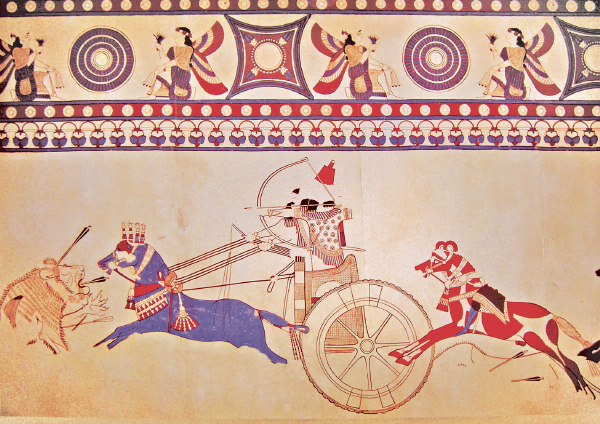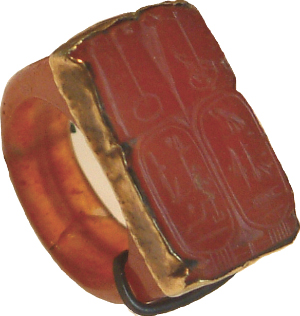Kings Must Do Justice (22:1–30)
Do what is just and right … to the alien, the fatherless or the widow (22:3). The emphasis here is on “doing” justice. This is not a static idea but an active dynamic exhortation. It is not enough to “be” just. The injunction is to create contexts of justice.184 The concern for the alien, the orphan, and the widow is present in other ancient Near Eastern contexts as well. Note the following examples:
• From Mesopotamia comes a text that speaks of the reform of Uru’inimgina (Urukagina) from the late third millennium B.C. This text closes with the following words: “Uru’inimgina established a covenant with the god Ningirsu not to hand the widow and orphan over to the powerful.”185
• The prologue to the laws of Urnammu (2111–2094 B.C.) contains phrases that explain that Urnammu did not hand the orphan over to the rich, nor the widow to the powerful, nor the possessor of one shekel to the possessor of one mina.186
• The Ugaritic text known as The Legend of Keret (approximately the second quarter of the fourteenth century B.C.) has an interesting chastisement similar to what we hear from the biblical prophets. Yassib criticizes his ailing father because he has allowed his hand to fall into mischief and because he does not judge the cause of the widow, nor does he take care of the poor and the orphan.187
Many other examples could be cited. What is clear is that the prophetic concern for the disadvantaged is rooted in a long history of concern and compassion for those who are marginalized by the powerful in society.
This palace will become a ruin (22:5). If the royal house does not do justice, the covenant curses will inevitably fall on the king and his assistants. Generally speaking the threat is that the land or the city will become a ruin. However in this case, as is so common in the exhortations of Micah, the leaders are made responsible.
The same kind of situation and similar language can be found in a text from approximately the eighth century B.C. The various tablets that are used to reconstruct this text (The Myth of Erra and Ishum) come from Assyria and Babylonia. Erra, also known as Nergal, is the god who has authority over both wild and domestic animals. At one point he threatens to unleash wild animals from the mountains and surrounding areas so they can devastate and ravage the city.188 The city will then become a ruin.
Like Gilead to me, like the summit of Lebanon (22:6). The use of these two geographic locations must be understood in terms of their characteristics. It is not a coincidence that both Gilead and Lebanon are regions endowed with thick forests in biblical times.189 We have seen (21:14) that a building within the royal complex in Jerusalem is called “The House of the Forest of Lebanon” because it is lavishly decorated with cedar from the forests of Lebanon. The intent here is to show that even though Yahweh has a high regard for the royal palace whose beauty is comparable to the wonderful forests of Gilead and Lebanon, he will still destroy it because of the king’s persistent disobedience of covenant stipulations.

Gilead mountains west of Ajlun
Todd Bolen/www.BiblePlaces.com
Fine cedar (22:7). See comments on 21:14 and 22:6.
For him who is exiled (22:10). The king of Judah referred to here is most likely Shallum, the son of Josiah. Shallum took the throne name of Jehoahaz. The prophet is advising the people not to mourn Josiah anymore, but to mourn the exiled king who will no longer see the homeland. Jehoahaz ruled only three months (609 B.C.). He was exiled to Egypt by Pharaoh Necho II, where he ended up dying. This death is considered to have been much more disgraceful than his father’s death in battle at the hand of the Egyptians.
Making his countrymen work for nothing (22:13). Jehoiakim, king of Judah from 609–598 B.C., was in reality a vassal king who had to pay tribute to Egypt. In order to do so, he used forced labor. What was absolutely unfathomable for Jeremiah is that Jehoiakim decides to build a new palace lavishly decorated in cedar and gold. In order to accomplish this he makes slaves out of his own people. Needless to say, this was forbidden by deuteronomic law. This is reminiscent of similar actions carried out by David (2 Sam. 20:24) and Solomon (1 Kings 4:6).
Forced labor without compensation was also customary in Egypt and Babylon. A seal from Judah in the seventh century B.C. illustrates the reality of slave labor. Its provenance is unknown, but it certainly comes from the period of the final days of Judah. It is inscribed on both sides. The name of the owner is inscribed on one side; on the reverse side the inscription reads: “Belonging to Pela’yahu who is over the corvée (hms).”190 It is possible that this Pela’yahu was in charge of forced labor without compensation during Jehoiakim’s reign.
Decorates it in red (22:14). The word translated as “red” is used elsewhere in Ezekiel 23:14 (in connection with paintings that were forbidden). The red paint comes from either red oxide191 or from red ocher (hematite).192 The use of the red color seems to have been prevalent in Mesopotamian decoration of important buildings. An example of this can be seen at Tel Barsip in an Assyrian provincial palace dated to the eighth or seventh century B.C. This palace had wall decorations painted on them with various colors, including bright red.193

Assyrian lion hunt with some of original colors preserved
Jill Walton, courtesy of the Louvre
Jehoiakim (22:18). See comment on 1:3.
Burial of a donkey (22:19). Jeremiah is so upset with King Jehoiakim because of his ridiculous architectural projects and his lack of justice that he prophesies a most dishonorable burial for the king. In fact, it is no burial at all, for dead donkeys received no burial. Not receiving a proper burial was a terrible curse both in Israel and in the ancient Near East in general (see sidebar on “Exposure of the Dead” at 8:1).
Lebanon … Bashan … Abarim (22:20). Lebanon here is indicative of the mountainous region far to the north. This is different from the expression in 22:23, where Lebanon is a metaphor for the cedar-paneled palace in Jerusalem. Bashan is in the Transjordan highlands north of Gilead; this is also a mountainous region. Abarim refers to a Moabite mountain region that lies to the southeast; this range includes Mount Nebo (Deut. 32:49). Though these may or may not refer to places of mourning, it seems clear that the use of these three geographical areas is intended to demonstrate that Jerusalem’s lament will be heard everywhere.
Signet ring (22:24). The term “signet” most likely refers to what is known as an ancient seal (see sidebar on “Seals”). When Yahweh pulls off Jehoiachin’s signet ring, it is a sign of rejection. Yahweh does not accept or validate the king’s authority.
